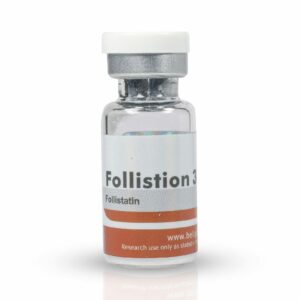


A remarkable feature of follistatin is its production of multiple isoforms through alternative splicing and post-translational modifications, leading to variants like FS288 and FS315. These isoforms have distinct biological roles based on their structures: FS288, the shortest form, has the highest affinity for cell surface proteoglycans, anchoring it to cellular sites and making it highly effective in regulating activin's local action. Conversely, FS315 has minimal cell-binding affinity. These structural differences allow follistatin to control activin’s effects on tissue development, growth, and cell differentiation across diverse biological systems.
Ledger, W. (2001). Inhibin, Activin, and Follistatin in Human Reproductive Physiology. Singapore: Imperial College Press.
Disclaimer: Information provided it this page is for general information only and does not substitute for professional medical advice.
For detailed information about Follistion 344 by Beligas Pharmaceuticals, consult with your doctor or healthcare professional.


Ledger, W. (2001). Inhibin, Activin, and Follistatin in Human Reproductive Physiology. Singapore: Imperial College Press.

Ledger, W. (2001). Inhibin, Activin, and Follistatin in Human Reproductive Physiology. Singapore: Imperial College Press.

Ledger, W. (2001). Inhibin, Activin, and Follistatin in Human Reproductive Physiology. Singapore: Imperial College Press.